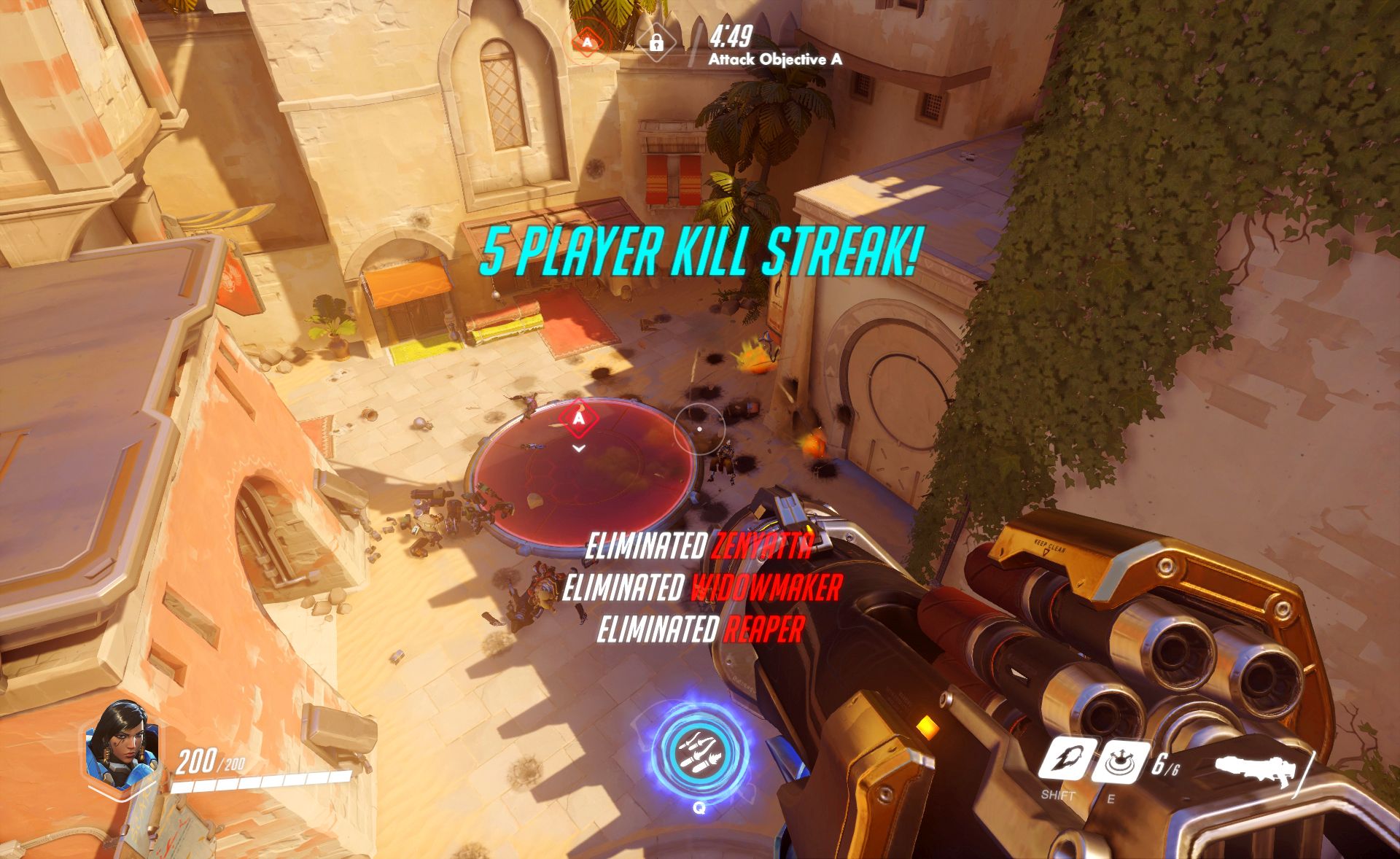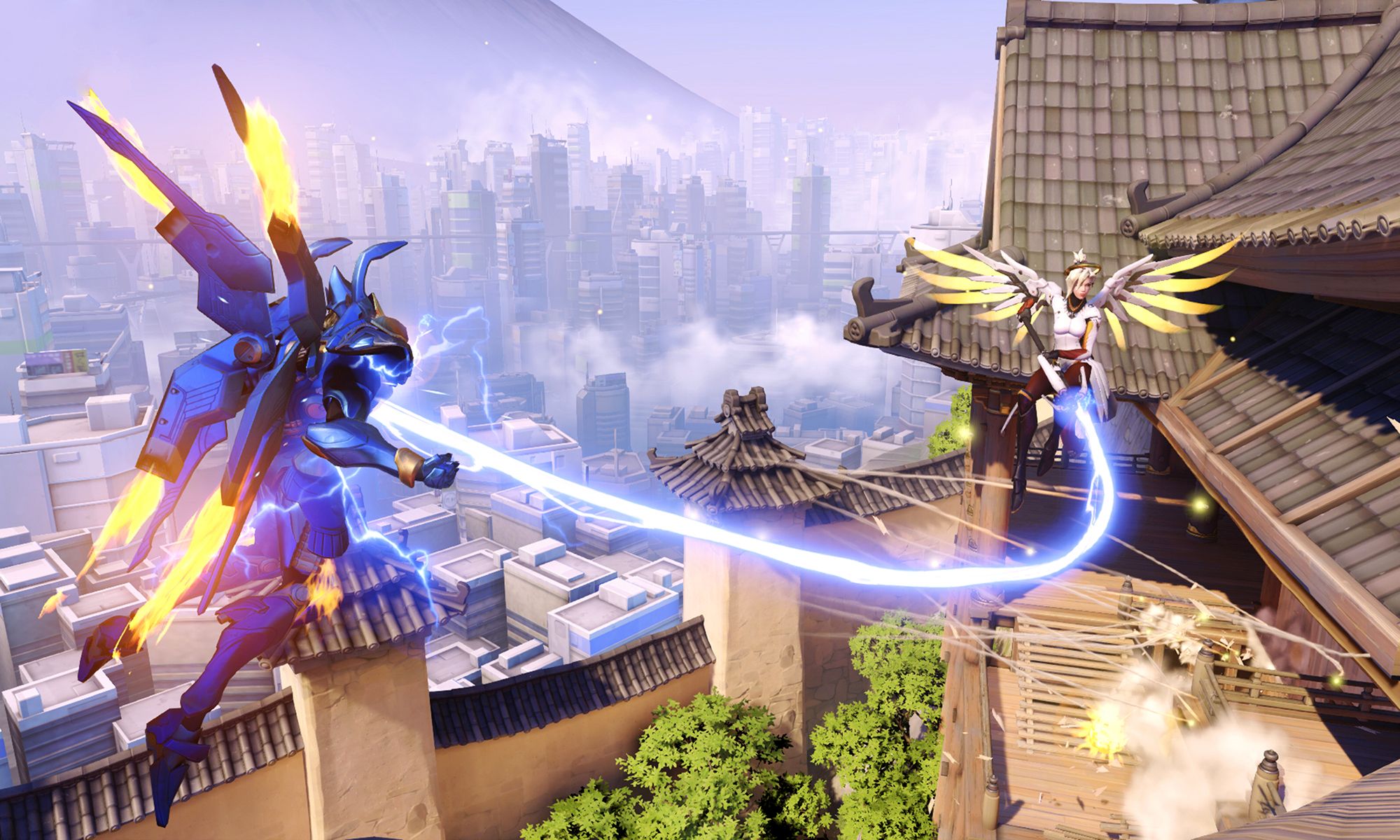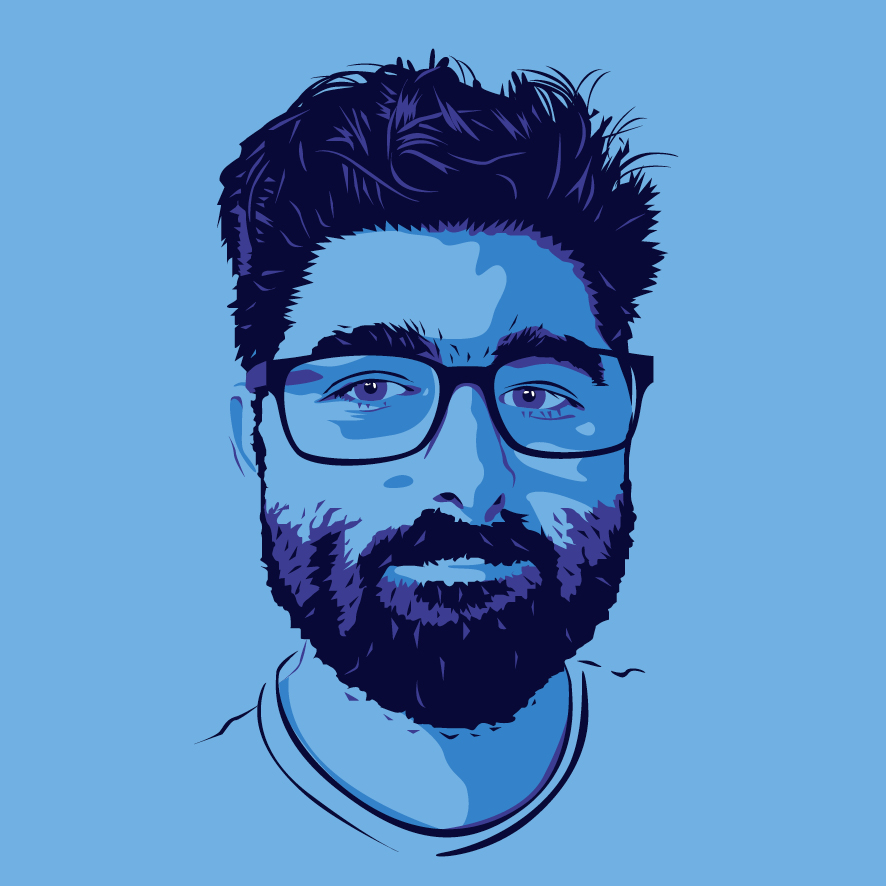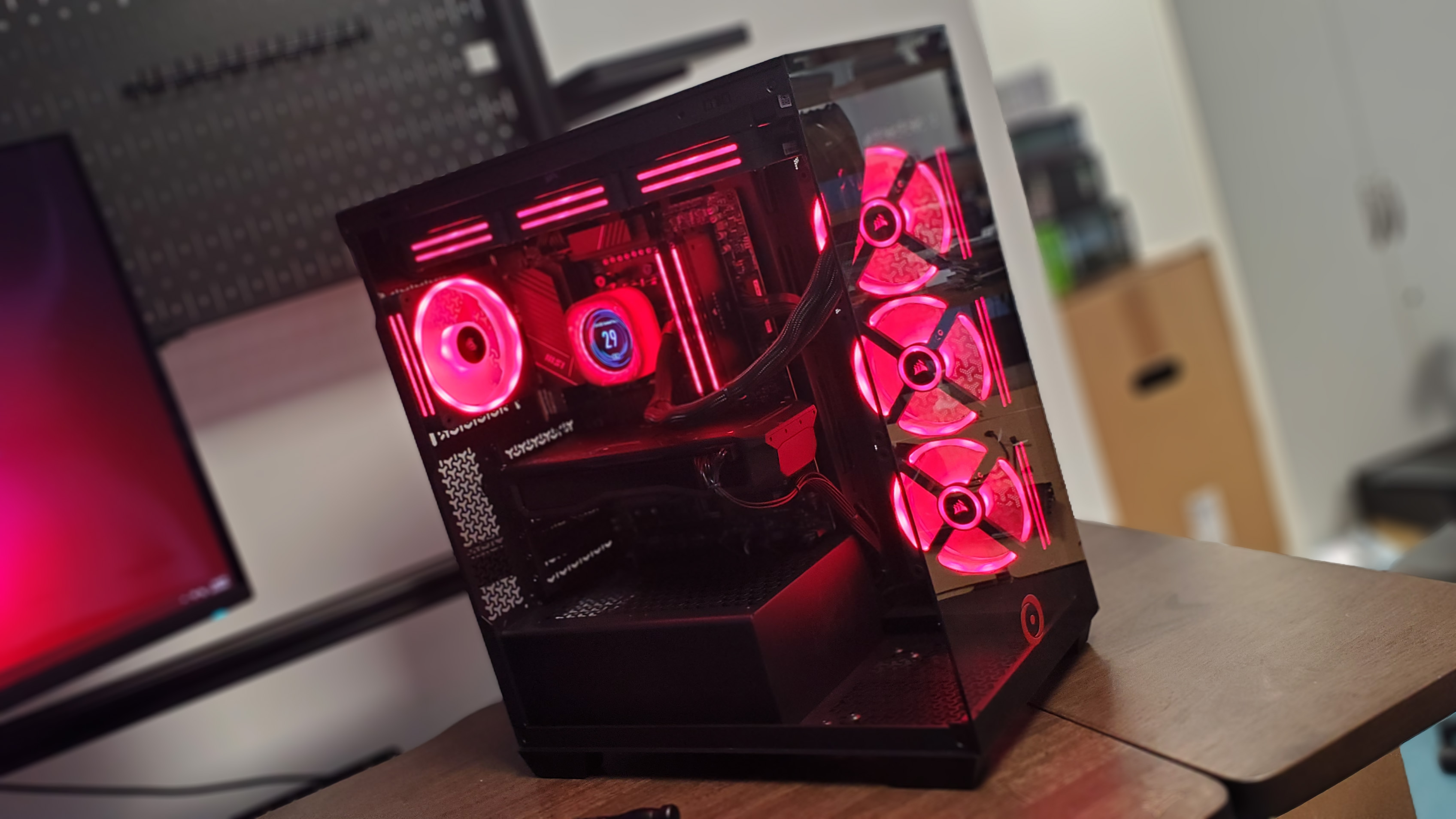Overwatch: hands-on with Blizzard's new shooter

“Right now we’re really concentrating on making the game easy to understand,” Mercer says. “Something I think we’ve learned at Blizzard about e-sports is all about how easy it is to watch. If I’m a spectator, do I understand what’s going on? And that all plays back into the super readable characters, the simple abilities and so forth. We think that the game could very well be an e-sport, but a lot of that is really up to the community.”
It helps that the maps are intentionally simple, with readable chokepoints and clear flanking lines that make use of the heroes’ different traversal abilities. Hanzo the samurai can clamber up walls. Reaper and Tracer can teleport. The sniper, Widowmaker, has a grappling hook that lets her get to high ledges quickly. The maps help players feel cool for exploiting avenues only open to their chosen hero, while also facilitating interesting scuffles between Overwatch’s loosely defined classes.
The shoutcasted match featured intricate duels between the fast attacking teleporter, Tracer, and the sniper, Widowmaker, while larger defensive tank characters like Winston and Reinhardt defined the battle lines around the shifting payload. At one point the attacking team’s Torbjorn built a turret on the payload and Winston threw a bubble shield around it, enacting what Blizzard internally refer to as the ‘killdozer’ strategy. The payload sailed through the level for a while, mowing down enemy team members as they tried to get close.

Support characters are also important to Overwatch, and not just for their healing and building abilities. They also make space for players new to the genre. Jeff Kaplan says they’re designed to give players “things to do other than put crosshairs over targets.” Mercy the flying medic can heal with a beam from her gun—another huge nod to Team Fortress 2—or switch the beam to give her target a damage boost. Torbjorn’s turrets demand good map understanding without the alienating demand for the twitch skills on which most shooters thrive. “We’re trying to make a distinctly Blizzard shooter,” Mercer says, “and for us that means making a very inviting shooter, making something very accessible, and then beyond that really making something that’s overthe- top crazy.”
That craziness, driven by spectacular ultimate abilities and huge variation in powers from character to character, gives everyone a chance to positively impact a match without being entirely responsible for a team’s failure. For intensely competitive players this will be unsatisfying in the long run, but as Kaplan points out, those players are well served by the existing crop of competitive shooters. Mercer talks about Overwatch’s gentler intentions, describing it as a game that’s trying to give everyone an interesting story to tell about that match afterwards.
Blizzard never want your kill/death ratio to matter. As such, there’s strictly no deathmatch mode.
“They come back and say ‘oh, remember how I got behind the team and they were all on the payload and that Death Blossom and I killed five of them and it was amazing.’ Those are the kinds of memories and stories that really stick with you.”
Everyone gets to have these hero moments. Even the most fragile Overwatch characters are designed to survive for a while in the field so you can spend more time interacting with other players than waiting for respawn timers. Blizzard never want your kill/death ratio to matter. As such, there’s strictly no deathmatch mode. Metzen and game director Jeff Kaplan imply that, to an extent, Overwatch is reacting against the violence of the competitive modern military shooter and the aggressive audience those games foster.
The biggest gaming news, reviews and hardware deals
Keep up to date with the most important stories and the best deals, as picked by the PC Gamer team.

“We have a long legacy of developing multiplayer games, and it came down to ‘is it even possible to build a shooter that doesn’t feel cynical, that doesn’t feel cruel, that doesn’t feel nasty’,” Metzen says. “Can you build one that promotes teamwork and relationships and having fun with your friends, and not getting killed with a thrown knife from halfway across the map as soon as you jump in.”
The aim of the bright, cheerful art, chippy one-liners and bloodless conflict is clear: Blizzard want to forge a positive community. They design heroes to be aspirational so they can appeal to as many people as possible, but they’re also sketching the audience they want: people of all shapes and sizes, old, young, man, woman, robot and ape. Inclusivity and accessibility are useful if you want to maximise your audience, but Blizzard’s business aims mesh with a genuine desire to create safe places for people to have fun together online—they’ve been doing it for a decade in World of Warcraft. Blizzard president Mike Morhaime even paused his speech in Blizzcon’s opening ceremony to call for more empathy in online gaming communities. He seemed to hesitate as he approached the words, as though nervous about halting the unstoppable hype carnival of Blizzcon, even for a few moments.
“There is another person at the other end of the chat screen. They’re our friends, our brothers and sisters, our sons and daughters. Let’s take a stand to reject hate and harassment, let’s redouble our efforts to be kind and respectful to one another, let’s remind the world what the gaming community is really all about.”
Part of the UK team, Tom was with PC Gamer at the very beginning of the website's launch—first as a news writer, and then as online editor until his departure in 2020. His specialties are strategy games, action RPGs, hack ‘n slash games, digital card games… basically anything that he can fit on a hard drive. His final boss form is Deckard Cain.


